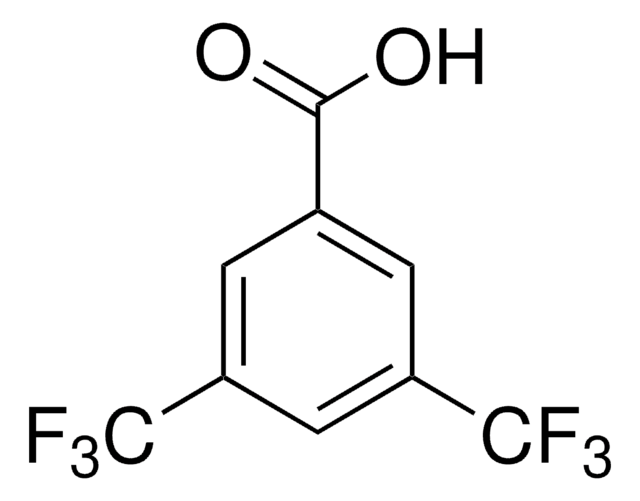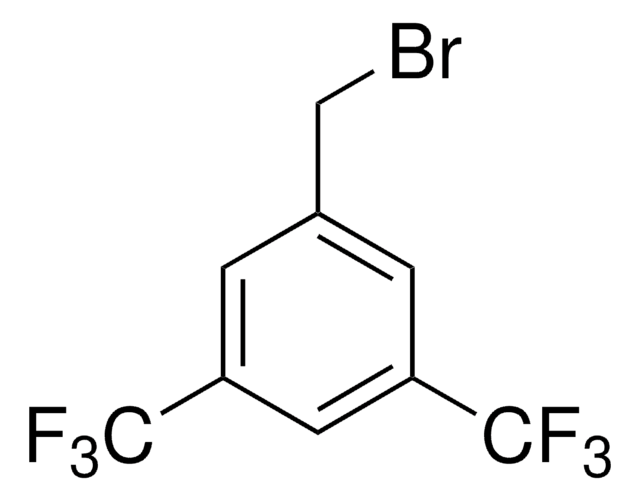About This Item
Recommended Products
assay
98%
form
solid
mp
121-123 °C (lit.)
solubility
methanol: soluble 25 mg/mL, clear, colorless
SMILES string
OC(=O)Cc1cc(cc(c1)C(F)(F)F)C(F)(F)F
InChI
1S/C10H6F6O2/c11-9(12,13)6-1-5(3-8(17)18)2-7(4-6)10(14,15)16/h1-2,4H,3H2,(H,17,18)
InChI key
PAWSKKHEEYTXSA-UHFFFAOYSA-N
Looking for similar products? Visit Product Comparison Guide
Application
- as building block to synthesize the pentaamine and bis-heterocyclic libraries
- in determination of ionic perfluorinated substances and telomers in leachates from landfills and sediment samples
signalword
Warning
hcodes
Hazard Classifications
Eye Irrit. 2 - Skin Irrit. 2 - STOT SE 3
target_organs
Respiratory system
Storage Class
11 - Combustible Solids
wgk_germany
WGK 3
flash_point_f
Not applicable
flash_point_c
Not applicable
ppe
dust mask type N95 (US), Eyeshields, Gloves
Certificates of Analysis (COA)
Search for Certificates of Analysis (COA) by entering the products Lot/Batch Number. Lot and Batch Numbers can be found on a product’s label following the words ‘Lot’ or ‘Batch’.
Already Own This Product?
Find documentation for the products that you have recently purchased in the Document Library.
Our team of scientists has experience in all areas of research including Life Science, Material Science, Chemical Synthesis, Chromatography, Analytical and many others.
Contact Technical Service









